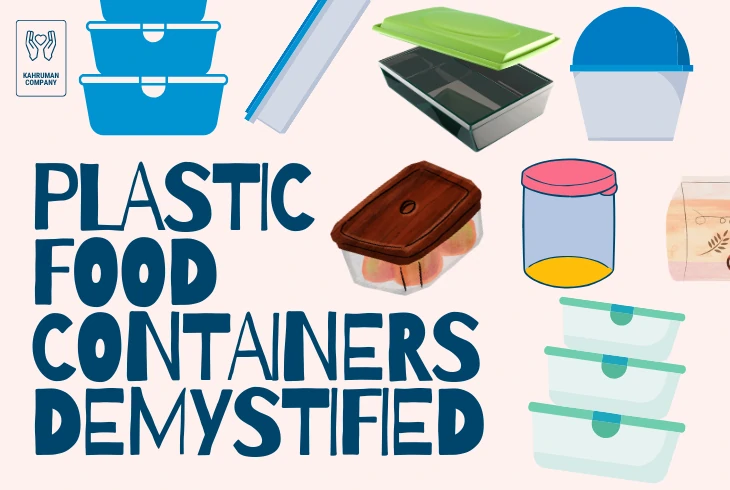What is import substitution?
Import substitution is an economic development strategy that seeks to reduce a country's reliance on imported goods by promoting the domestic production of substitutes.
The procedure involves implementing policies such as tariffs, subsidies, and restrictions on foreign investment to protect domestic industries and encourage the growth of new ones. The goal is to create a self-sufficient economy that can produce goods domestically rather than relying on imports from other countries with export promotion.
The strategy was popular in many developing countries in the mid-20th century to promote industrialization and economic growth, but its clout remains a subject of debate among economists.
Import substitution and export policies could create a more sustainable economy and reduce reliance on external markets while allowing for the export of goods to generate foreign exchange. Therefore, substitution industrialization is an economic theory still relevant in today's global economy.
What is the import substitution theory?
The import substitution theory is an economic development strategy that advocates for creating domestic industries to replace imported goods. The basic idea of the theory is that by producing goods domestically instead of importing them, a country can reduce its dependence on foreign suppliers and build a self-sufficient economy.
The import substitution theory gained acceptance in the mid-20th century, especially in Latin America, as a way for developing countries to promote industrialization and economic growth. The approach was based on the assumption that import substitution would stimulate domestic production and create jobs while reducing the country's trade deficit and dependence on foreign countries.
Under the import substitution theory, countries imposed tariffs, quotas, and other barriers to trade to protect domestic industries from foreign competition. Governments provided subsidies and other incentives to promote the growth of domestic industries. This policy aimed to create a self-sufficient economy that could produce all of its goods rather than relying on foreign imports.
While the import substitution theory had some success in promoting industrialization in certain countries, it had several drawbacks, such as inefficiency, high costs, and limited export potential. As a result, many countries have since shifted away from this strategy and adopted other approaches to economic development.
What is the difference between import substitution industrialization(ISI) and import substitution?
Import substitution industrialization (ISI) and import substitution are both economic policies that aim to promote the domestic production of goods and decrease dependence on imports. However, there is a difference between the two.
Import substitution is a policy that involves substituting imported goods with domestically produced ones. This policy is implemented by imposing tariffs, quotas, and other trade barriers on imported goods to make domestically produced goods more competitive. The goal is to create a self-sufficient economy that can meet its needs without relying on imports.
On the other hand, import substitution industrialization (ISI) is a broader economic strategy that includes import substitution but also focuses on developing domestic industries. The policy aims to create a self-sufficient industrial base to produce a wide range of goods and compete globally. This is achieved through government intervention in the economy, such as providing subsidies and protectionist measures for domestic industries.
One key difference between import substitution and ISI (Import substitution industrialization) is that ISI places a greater emphasis on industrialization and the development of domestic industries. In addition, ISI involves more government intervention in the economy than import substitution.
Regarding their impact on exports, import substitution can limit a country's ability to export goods, as it focuses on producing goods for domestic consumption rather than for export. In contrast, ISI aims to develop domestic industries that can also produce goods for export, which can help increase a country's foreign exchange earnings.
Overall, while import substitution and ISI aim to promote domestic production and reduce dependence on imports, ISI is a more complete and interventionist approach that also focuses on industrialization and developing a self-sufficient economy.
You can read more information about: Importing From Turkey - The Main Export of Turkey
Why do countries pursue import substitution policies?
Import substitution policies are pursued by countries as a means to reduce their dependence on imported goods and to promote domestic production of goods that were previously imported. The underlying rationale behind this policy is to develop the country's domestic industries, create employment events, reduce the trade deficit, and improve the balance of payments.
Historically, countries have pursued import substitution policies to respond to the balance of payments problems, which occur when the cost of imports exceeds the revenue earned from exports. Countries may reduce their imports and substitute them with domestically produced goods in such cases. This may involve the imposition of tariffs, quotas, or other restrictions on imported goods.
Another reason why countries pursue import substitution policies is to protect and promote their domestic industries. By restricting imports, domestic sectors can develop and become more competitive. This can lead to increased employment, higher economic growth, and greater economic self-sufficiency.
Examples of import substitution policies:
Countries have implemented various examples of import substitution policies over the years. Here are a few:
India's Industrial Policy Resolution of 1956: This policy aimed to promote import substitution and the growth of domestic industries by providing subsidies and other incentives to local businesses. The government also imposed high tariffs and other trade barriers to protect domestic industries from foreign competition.
Brazil's Import Substitution Program of the 1950s and 1960s: Brazil pursued a policy of import substitution industrialization (ISI) during this period, aiming to promote the growth of a domestic industrial base that could replace imported goods. The government provided subsidies and support to local companies and imposed high tariffs and other trade barriers to reduce the country's dependence on imports.
Argentina's Import Substitution Industrialization Policy of the 1930s: Argentina implemented a policy of ISI in the 1930s, which involved the establishment of a protected domestic market, import substitution policies, and the creation of state-owned enterprises in key industries.
Mexico's Import Substitution Policy of the 1940s and 1950s: Mexico pursued a policy of import substitution in the 1940s and 1950s, which aimed to promote the growth of domestic industries and reduce dependence on imports. The government provided subsidies and support to local comapnies, imposed high tariffs and other trade barriers, and established state-owned enterprises in key industries.
Have countries achieved economic development through import substitution policies?
The effectiveness of import substitution policies in achieving economic development is debated among economists. While some countries have completed some degree of success with these policies, others have not. It is important to note that economic development is a complex process that depends on factors beyond import substitution policies, such as political stability, access to resources, and global economic conditions. Therefore, it isn't easy to definitively state whether countries have achieved economic development through import substitution policies.
Critics of import substitution policies argue that they can lead to inefficiencies and reduce the overall competitiveness of domestic industries. By protecting domestic industries from global competition, import substitution policies can shield them from market pressures that would otherwise drive them to become more efficient and innovative. This can lead to lower-quality products and higher consumer costs, which can ultimately hinder economic growth.
What are other options instead of import substitution?
Countries can pursue several alternative economic development strategies instead of import substitution, depending on their specific state and goals. Some of these alternatives include:
Export-oriented industrialization: This strategy promotes the development of export-oriented industries that produce goods for export to world markets. By focusing on exports, countries can tap into global demand and generate foreign exchange, which can be used to finance further economic development.
Foreign direct investment: Countries can attract foreign investment to promote economic growth rather than relying solely on domestic investment. This can involve creating an attractive investment climate, offering incentives for foreign investors, and developing base to support foreign investment.
Regional integration: By joining regional trade agreements or forming economic blocs with neighboring countries, countries can increase regional trade and investment flows. This can promote economic growth, create jobs, and increase competitiveness.
Improving competitiveness: Rather than protecting domestic industries, countries can focus on improving their competitiveness through measures such as investment in education and training, improving framework, and reducing bureaucratic barriers to business.
Import liberalization: Rather than implementing protectionist policies, countries can open up their economies to trade by lowering tariffs and other import barriers. This can promote competition, improve consumer choice, and increase efficiency.
Is it possible to combine import substitution with other strategies for economic development?
Yes, it is possible to combine import substitution with other strategies for economic development. Many countries have pursued a mix of policies to achieve their development goals.
For example:
A government may implement import substitution policies to promote the growth of domestic industries while pursuing export-oriented policies to expand its global market share. Other countries may combine import substitution with policies to encourage foreign investment, improve framework, and invest in education and research. The specific combination of approaches will depend on a country's unique state and objectives.
Does import substitution still apply in today's global economy?
Import substitution is still relevant in today's global economy, although its potency as a development strategy is subject to debate among economists.
The relevance of import substitution as an economic development strategy in today's global economy is debated among economists. Some argue that the plan is outdated and ineffective in the current global economic environment, while others say it can still be relevant in certain state.
One of the main challenges to the relevance of import substitution is the increased maturation of trade and investment. Nowadays, countries are more interconnected than ever, and it can be challenging to implement global policies without facing reprisal from other countries or violating global trade agreements.
Another challenge is the convenience of cheaper and more efficient production technologies, making it difficult for domestic industries to compete with imports. This is specially true in industries that require large-scale production or specialized expertise, such as electronics or pharmaceuticals.
Despite these challenges, some states remain where import substitution may be relevant. For example, in some developing countries with limited resources, import substitution may be necessary to develop domestic industries and reduce dependence on imports. Also, in some cases where domestic industries have a comparative advantage, such as in agriculture or natural resources, import substitution policies may effectively promote their growth.
What are the main difficulties in implementing import substitution policies?
Implementing import substitution policies can be challenging, and countries may face several key obstacles. Some of these challenges include:
Limited domestic capacity: Implementing import substitution policies requires a strong domestic industrial base to produce previously imported goods. However, many developing countries lack the ability and base to build and expand their industries, which can hinder the clout of import substitution policies.
Lack of competitiveness: Domestic industries may struggle to compete with imported goods in terms of quality, price, and efficiency. This can lead to lower-quality products, higher consumer costs, and reduced demand for domestically produced goods.
Dependence on foreign technology and capital: Developing domestic industries may require access to foreign technology and money, which can be challenging. Domestic firms may lack the technical expertise to develop new technologies, and foreign investors may hesitate to invest in a country with a weak formal framework or unstable political environment.
Trade retaliation: Import substitution policies can result in increased protectionism and trade restrictions, triggering retaliation from other countries. This can lead to reduced access to foreign markets and increased trade tensions.
Resource constraints: Import substitution policies can be costly to implement, and countries may lack the necessary resources to fund the development of domestic industries. This can lead to budget deficits and increased public debt, ultimately undermining economic growth.
What are the advantages of import substitution?
The benefits of import substitution policies can include the following:
Reduced dependence on foreign suppliers: By promoting domestic production, import substitution policies can reduce a country's reliance on foreign suppliers for essential goods, increasing the country's economic self-sufficiency and decreasing its frailty to external shocks.
Development of domestic industries: Import substitution policies can encourage domestic industries' growth and stimulate investment in these sectors. This can lead to job creation, increased economic growth, and a more diverse economy.
Protection of domestic industries: By placing tariffs, subsidies, or restrictions on foreign goods, import substitution policies can protect domestic industries from foreign competition and provide a level playing field for domestic producers.
Promotion of national economic sovereignty: Import substitution policies can promote national financial independence as countries develop the ability to produce goods domestically rather than relying on foreign suppliers.
How to import substitution can protect the industry?
Import substitution can protect domestic industries by implementing policies limiting or reducing imports of goods that can be produced domestically. This can include tariffs, quotas, or other trade barriers that make imported goods more expensive and less competitive than domestic products. By creating a more level playing field, domestic industries can better compete with foreign firms, gain market share, and grow and expand.
Additionally, import substitution policies can provide support and incentives for domestic industries, such as subsidies or tax breaks, reducing costs and promoting investment in new technologies and processes. By promoting the growth and development of domestic industries, import substitution can help to create jobs, boost economic output, and enhance a country's overall competitiveness in the global economy.
What is the problem with import substitution?
Import substitution has been criticized for several reasons:
Inefficiency: Import substitution can result in inefficiencies in domestic industries due to lack of competition. Domestic producers may become complacent and fail to innovate or improve their products because they face little competition from foreign companies.
High costs: Import substitution can lead to higher costs for consumers because domestic producers may not be able to produce goods as efficiently as foreign producers. This can result in higher prices and lower-quality products.
Dependency: Import substitution can create dependence on the domestic market and limit conveniences for export growth. This can make it difficult for domestic companies to compete in global markets and may lead to a lack of economic diversity.
Lack of foreign investment: Import substitution policies can discourage foreign investment in the domestic economy because they may see the policies as protectionist and potentially discriminatory.
Political interference: Import substitution policies may require significant government intervention in the economy, which can lead to political interference and corruption.
What are the cons of the import substitution strategy?
Import substitution strategy has several disadvantages, including:
Limited export potential: The import substitution strategy focuses on developing the domestic market and protecting domestic industries from foreign competition. This can limit moments for export growth, as the economy may not be able to produce goods at a competitive price on the global market.
Inefficiency: Import substitution strategy may lead to inefficiencies in domestic industries due to lack of competition. Domestic producers may become complacent and fail to innovate or improve their products because they face little competition from foreign companies.
High costs: The import substitution strategy can result in higher costs for consumers because domestic producers may not be able to produce goods as efficiently as foreign producers. This can result in higher prices and lower-quality products.
Dependence on the domestic market: The import substitution strategy can create a dependency on the domestic market and limit moments for export growth. This can make it difficult for domestic companies to compete in international markets and may lead to a lack of economic diversity.
Lack of foreign investment: The import substitution strategy can discourage foreign investment in the domestic economy because it may be seen as protectionist and potentially discriminatory.
Political interference: Import substitution strategy may require significant government intervention in the economy, which can lead to political interference and corruption.










